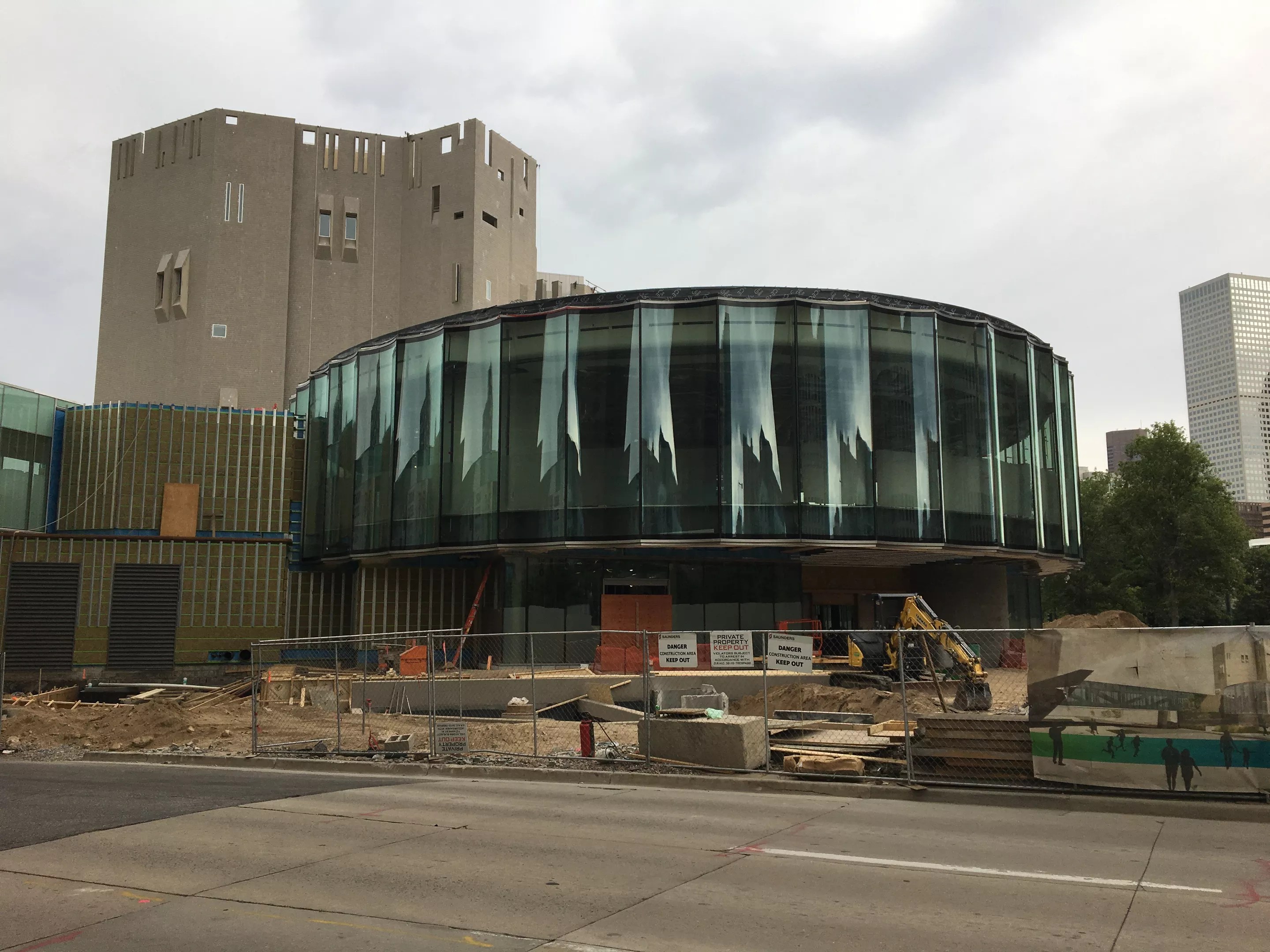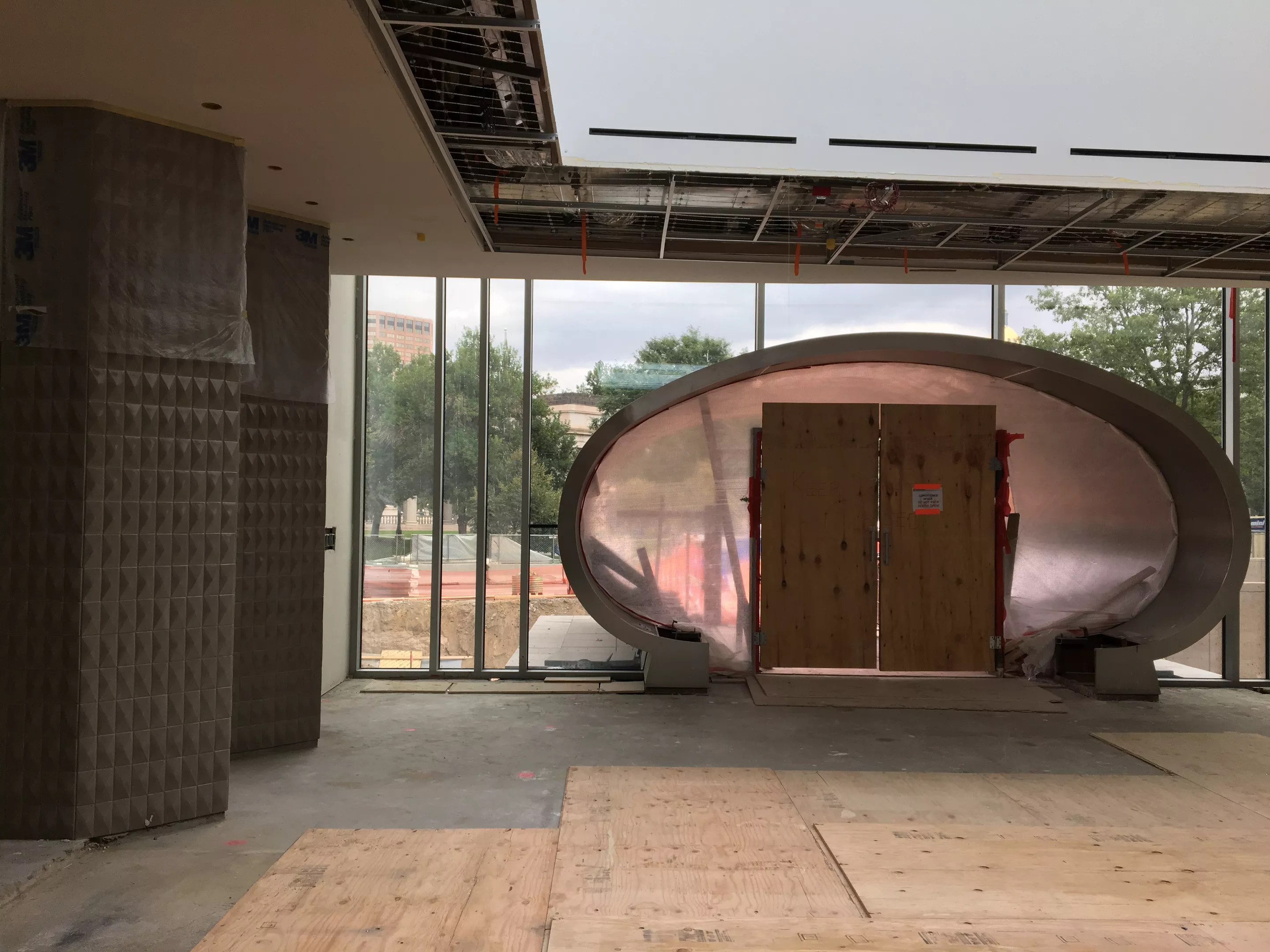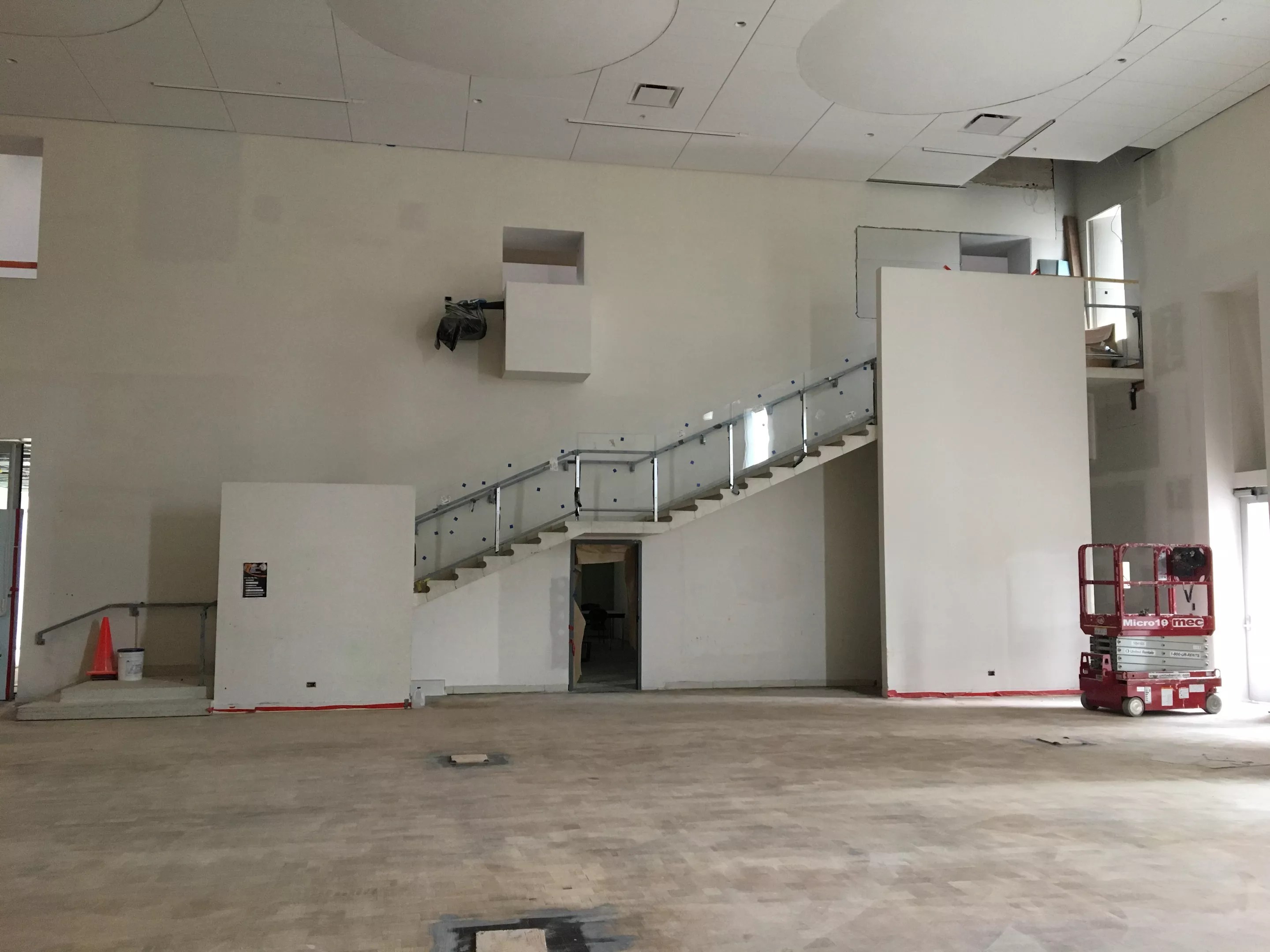
Robert Delaney

Audio By Carbonatix
The Denver Art Museum‘s iconic tower, where renovations are now under way, was designed by mega modern master Gio Ponti, with James Sudler, a Denver modern master, by his side. The result, which opened in 1971, is one of the finest buildings in Colorado, right up there with Walter Netsch’s Air Force Academy Chapel (itself about to be renovated) and I. M. Pei’s National Center for Atmospheric Research. These are internationally renowned structures in our own back yard.
The DAM’s tower closed nearly two years ago, and within months construction began on an addition to replace the last remnant of the 1950s museum, which was torn down in preparation. In early 2018, the Ponti tower was emptied of its collections, and rehab work began there. The overall project involved the ground-up construction of a new, attached building, as well as updating the tower to include all new windows as well as new mechanical, electrical and climate-control systems; remodeling and restoration of the interior; additional elevators; completion of the heretofore only partially finished seventh floor; and replacement of thousands of damaged tiles both inside and (mostly) out. The final cost is projected to be $150 million, with $35.5 million of that coming from an Elevate Denver bond, approved by voters in a landslide.
All of this is being overseen by designers from Denver’s Fentress Architects, who have teamed up with Machado Silvetti of Boston, tapped for its expertise. Jorge Silvetti, a principal with that firm, is a Ponti enthusiast and scholar, and his understanding of the master’s aesthetic is revealed in the careful juggling he pulled off to successfully insert an addition immediately adjacent to the front of the iconic building. The curvilinear volume of the addition is perfectly offset by the repeatedly reinforced verticality of the tower. Though larger, it serves the composition in the way that a never-realized auditorium, planned for a spot near the tower’s tube entrance, would have. Its location, south and slightly east of the tower and thus directly north across West 13th Avenue from Daniel Libeskind’s Hamilton Building, allows the semi-circular form to visually, though not literally, “connect” the two major components of the DAM’s campus: the Ponti and the Libeskind. Together, the three function as a true promenade architecturale.

Staircase in the Sie Welcome Center that will lead to the Sturm Grand Pavilion, an event space designed by Fentress Architects and Machado Silvetti.
Robert Delaney
This year, make your gift count –
Invest in local news that matters.
Our work is funded by readers like you who make voluntary gifts because they value our work and want to see it continue. Make a contribution today to help us reach our $50,000 goal!
With the installation of a semi-circular glass curtain wall, fitted out with concave sheets, the addition has been pretty well fleshed-out on the exterior, and because the tower always looks good, people have begun to ask me when it’s going to be finished, as though my answer will invariably be, “Oh, any minute.” But there’s a construction axiom that applies here: “When a building looks almost done, it’s about half finished.” This is, of course, because of the far more time-consuming process of completing the inside.
A few weeks ago, the DAM announced that the finished project would be revealed in stages starting in June 2020, when the addition and the first two floors of the tower will open to the public. The entire place is set to be completed by the end of 2021, which lines up exactly with the museum’s original schedule.

View of Gio Ponti’s Martin Building through one of the new skylights designed by Fentress Architects and Machado Silvetti.
Robert Delaney
On a tour of the construction site, where there’s much to be finished, the relationship of the spaces is still easy to see, with some new and special features apparent. The entrance to the museum will be right across Acoma Plaza from the Denver Central Library, through that theatrical, drum-shaped volume with the fluted curtain wall that will be named the Anna and John J. Sie Welcome Center; the forecourt that brackets the entry will be used for seating and dining. Inside, visitors will enter a long, wide corridor that leads to the base of the tower. Just beyond the airlock vestibule, to the left will be a white-tablecloth restaurant (the DAM’s concessionaire has not been announced), and to the right will be a more informal cafe (also unannounced).
Christoph Heinrich, the DAM’s director, leads the tour. Gesturing to the sides of the corridors, he says, “There will be art on these walls,” which is a bit of a surprise, since entry corridors in museums aren’t often used that way. But these long, tall walls are ideal for the job, and he reminds us that the Ponti also featured art in its entry. Andrea Fulton, the DAM’s deputy director, points out the lighting system in the not-yet-completed ceiling of the broad hallway. Because the translucent drop panels have not been installed, I can see the strings of high-tech lights that will create the illusion of thousands of tiny twinkling stars. Other lighting effects are being restored with new technology, like the luminous joints in the facade and the back-lit windows.

The tube entrance at the Martin Building, with two restored tile-clad columns on the left showing off the new ceramic tiles.
Robert Delaney
Farther down the corridor is a gorgeous grand staircase, kind of a corkscrew affair for which the sides of the spiral and the stair treads and risers have been done in cream-colored cast terrazzo. The staircase leads up to the second level, where the Sturm Grand Pavilion event space will be located. Back down the corridor, the Sie Center seamlessly joins to the main level at the base of the tower. When it reopens, the tower will be redubbed the Martin Building in honor of museum board chairman Lanny Martin and his wife, Sharon Martin.
Some DAM regulars will recall the glass curtain wall volume that ran along the Civic Center side of the tower, behind which was the lobby adjacent to the tube entrance. It had a sort of candy cane footprint, linking the tower to the now demolished ’50s museum. The rehab project has straightened that out, in one of the most radical changes to the Ponti design; fortunately, the gridded pattern of the fenestration has been retained. Inside this volume is the continuation of the corridor, leading visitors from the Sie to the museum proper. At the base of the tower, the architects bring light into the interior through a series of large, transparent skylights. Only one is uncovered during my tour, right where the tower splits in two. Seeing the tile-clad outside walls from the inside is spectacular.

The double-height space in the Martin Building being redone as the Bartlit Creative Hub.
Robert Delaney
Corning, the original maker of those glass tiles, no longer does that kind of work, so Lamberts, a German company, replicated the originals, this time in ceramic. There are two tile-clad columns just beyond the tube, and even under close examination, the differences between the old and new ones are all but impossible to perceive. That stunning elevator lobby is gone, but it was sacrificed for a good cause: the addition of another double bay of elevators (a much better solution than putting them on the exterior, an idea kicked around for a while). The Bonfils-Stanton Gallery beyond is being reconfigured, its ceiling lowered a story; meanwhile, the gorgeous, double-height Ponti Hall opposite the tube is being converted to the Bartlit Learning and Engagement Center, including the Creative Hub.
While I’m not crazy about the look of the bridge leading to the tube, overall the DAM is doing a good job of giving Ponti’s only work in North America a new lease on life as the spectacular Martin Building. And unlike so many city projects, it’s on time and on budget.